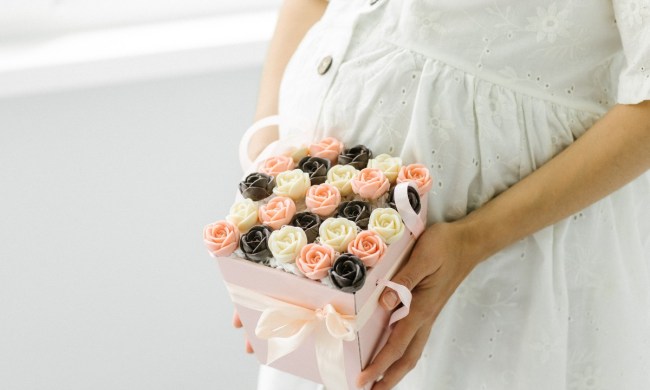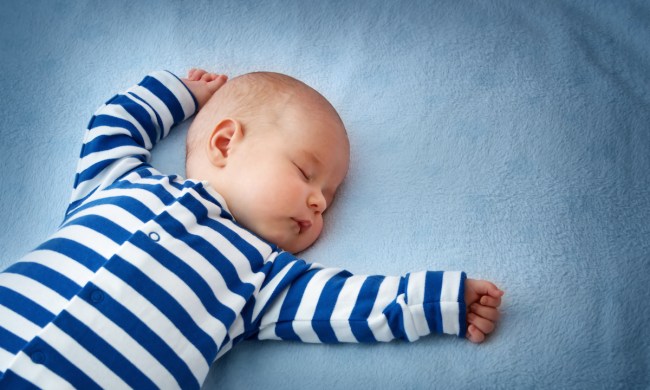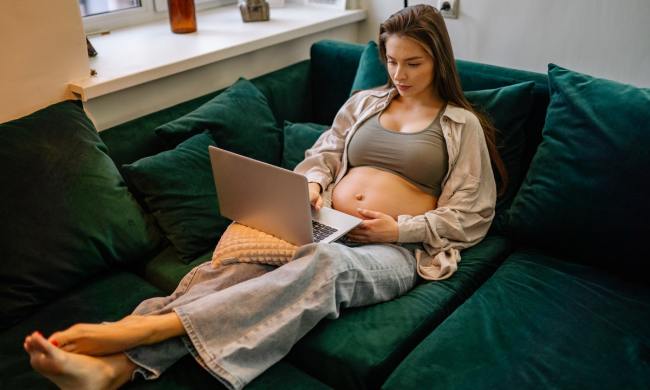Diapers — can’t live with them, can’t live without ’em. (But really though, you can’t live without them when you have a newborn, infant, or toddler.) The reality is, diapers are both a blessing and an inconvenience. They ensure that your home isn’t perpetually covered in pee and poop, but they can cost a small fortune and clog landfills. With this in mind, many prospective and new parents consider using cloth diapers as a more budget-friendly, Earth-conscious option. Of course, this alternative isn’t always the ideal, either. To cloth or not to cloth — that is the question. You’ll want to consider the benefits and drawbacks of both reusable and disposable diapers — and determine which is a better fit for your lifestyle. Let’s break it down.
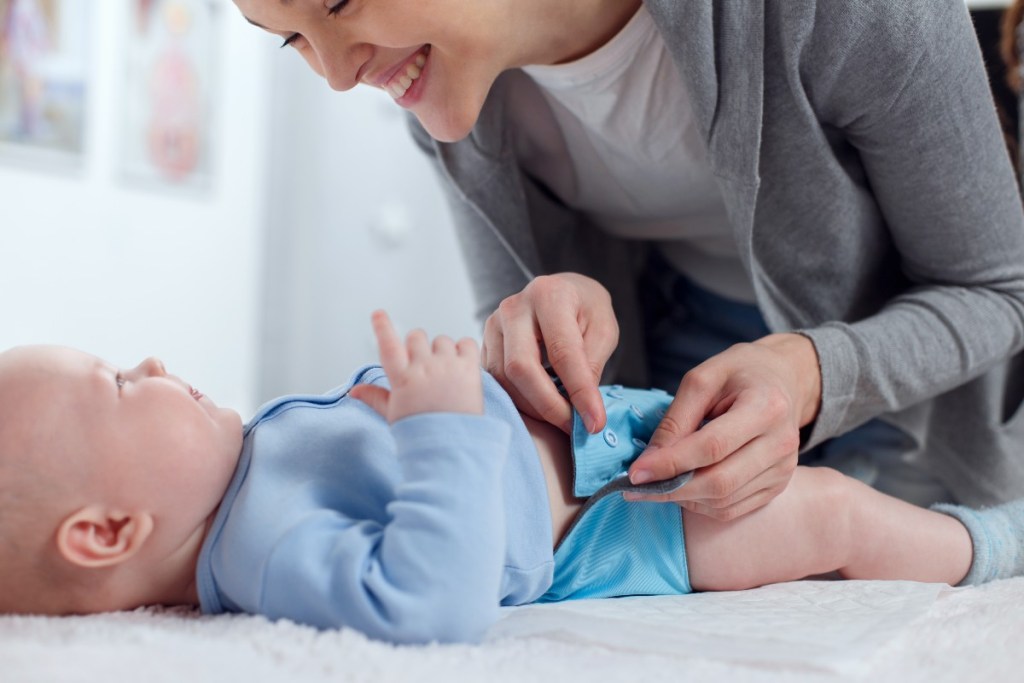
Cloth diapers vs. disposable diapers
The pros and cons of cloth diapers are both plentiful. Faithfully choosing reusable is quite a commitment. There are several things you’ll want to keep in mind. Of course, on the flip side, disposable diapers can be great, but they certainly aren’t perfect, either. Here are the biggest distinguishing factors:
Material Choices
Cloth diapers: These reusable diapers come in various materials, so you can go with cotton, terry, or another soft fabric of your choosing. You can try a simple cloth liner option that needs to be folded and secured or a fitted one that’s ready to use (it looks like a traditional disposable diaper.) Either way, you can feel good knowing that there are no harsh chemicals or dyes in your diaper of choice.
Disposable diapers: Of course, there are a variety of options to choose from, but the outside of most disposable diapers are made with polyethylene film and polypropylene. The absorbent inside is made of chemical compounds that can effectively absorb urine, and the whole thing is often bleached in chlorine. In other words, they’re not the most “natural” item to put against Baby’s bare bum. Nevertheless, most pediatricians say that they’re perfectly safe.
Winner: Cloth diapers are chemical-free and super soft on Baby’s sensitive skin.
Expense
Cloth diapers: Sure, you have to shell out a bit more at first when investing in a set of cloth diapers. Soon enough, though, you’ll be thankful you did. Disposable diapers are a huge expense and add up quickly; if you are on a very tight budget, cloth diapers may be the way to go.
Disposable diapers: Better start saving up now; you are going to go through diapers like they are going out of style. Newborns typically need to be changed between eight and 10 times a day. That can mean up to 70 diaper changes in the first week alone. Of course, things slow down a bit as Baby grows and gets a bit older, but you’ll still need a significant budget for your weekly or monthly boxes (yes, buying in bulk helps a bit!).
Winner: Cloth diapers will save you a bundle!
Protection
Cloth diapers: To be honest, most cloth diapers do a fair job of absorbing, catching, and holding your little one’s pees and poops. However, they’re definitely not made to allow for any, um, marinating time. This means you’ll be changing Baby more often.
Disposable diapers: If you have an active lifestyle, you’ll be happy to know that most disposable diapers will keep your cutie-pie protected. That absorbent chemical inside holds more urine and allows you to go a wee bit longer between changes.
Winner: Disposable diapers will hold more and keep Baby drier for longer.
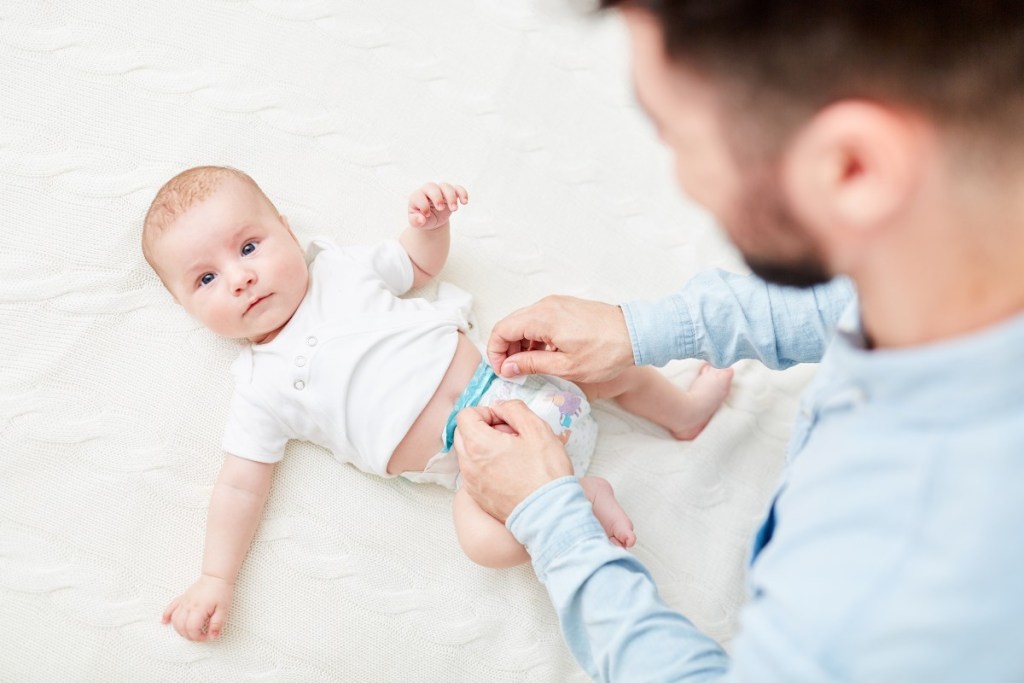
Convenience
Cloth diapers: We’re not going to lie — this is more like an “inconvenience” factor. When you’re on the go, cloth diapers are not exactly low-maintenance. You’ll need to have a system for bagging and transporting, and eventually washing. It’s a process; if you choose to use cloth diapers, you might consider the occasional disposable or two for car trips, errand-heavy days, and even bedtime changes.
Disposable diapers: One and done — throw that puppy in the garbage and move on with your day. No mess, smelly laundry accumulating, and no worries. To this end, disposable options streamline the overall diaper-changing process.
Winner: Disposable diapers are much more convenient for busy parents.
Eco-friendly factor
Cloth diapers: If you care about Mother Nature and want to do your part to contribute to the greater good with a less-impactful carbon footprint, cloth diapers are the way to go.
Disposable diapers: Sorry to say that these bad boys are not so great for our Earth. Disposable diapers add millions of tons of waste to landfills every year — so you may want to weigh your individual needs with those of our planet.
Winner: Cloth diapers are undoubtedly a more Earth-friendly option.
Clearly, both reusable cloth diapers and disposable options have their benefits and drawbacks. Ultimately, one isn’t better than the other. Your choice needs to be motivated by your individual needs — and that of your baby. You’re also not limited to one or the other. You can choose to switch back and forth between the two depending on your schedule. There’s no right or wrong here — find what works for you and go with it.
